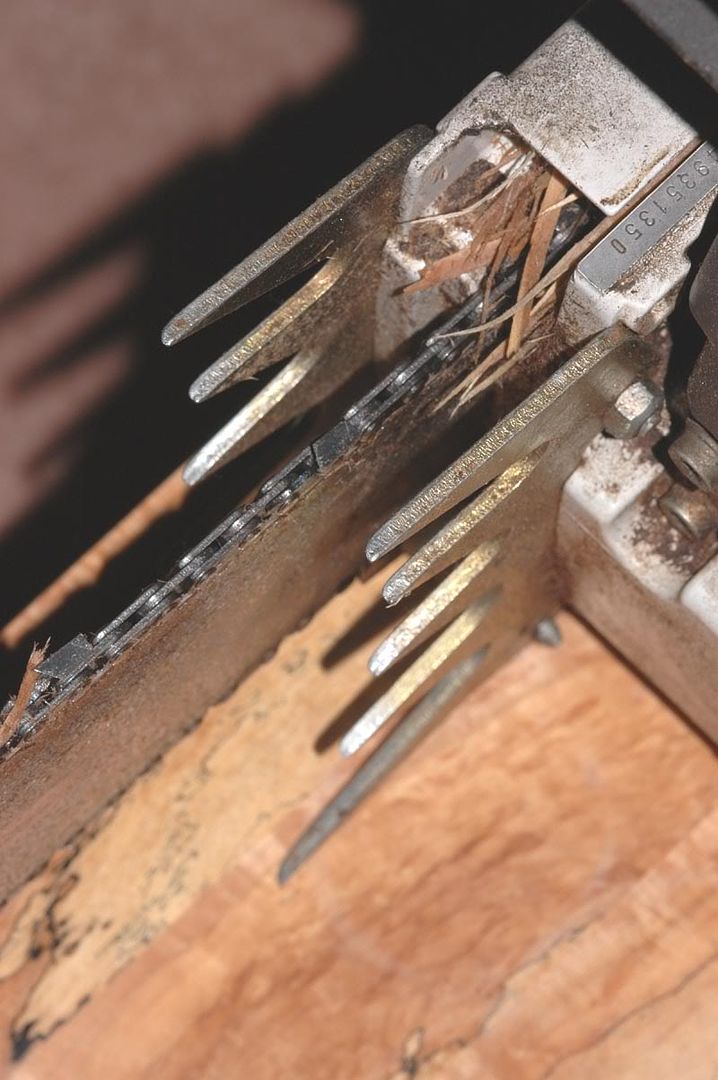fishhuntcutwood
Full wraps and long bars!!!!!!!!!
- Joined
- Jan 1, 2005
- Messages
- 3,601
- Reaction score
- 395
Clearance recommend this thread, and I was going to do it anyway, so here goes...
Big dogs, or spikes, or dawgs, or bumper spikes, whatever you call them serve a purpose and don't just look cool. Mainly, they're for thick, West Coast bark we see on original and second growth Doug Fir, cedar, whatever. You've got to be able to take a bite in the tree to rotate your saw around and sweep your (long) bar through the cut up to your hinge. There's no way you can just pull a 28"+ bar lengthways through a cut on your own without wearing yourself out. So you dog in, and sweep through, and it makes it a one hand operation. (I didn't just say that...I mean easy two hand operation.)
You'll also use them when starting a cut. Walk up to your hinge, set the dog in the bark, and now the dogs and the bark are taking the load of the saw and the (long) bar you're using. Instead of getting up to the back cut and dancing around trying to get your bar level and everthing lined up, you've got most of the weight of the saw off your hands.
Large dogs also keep your muffler and brake flag off the tree as well, which are both good for obvious reasons.
What else? Tree Sling'r? Timbe Pig? Timberwolf? Clearance? Andy?
The first pic is of a cookie I took off that Doug fir from the other day in the full wrap thread. That was a small tree and you can see how thick it's bark was. The tree that Tree Sling'r went potty next to in the full wrap thread likely had bark twice as thick!
The second pic is me dogged into the same tree starting my back cut. I hadn't even thought to make that picture, but it just happened that I cought a prime example on film. You can also see how thick and gnarly that bark is.
So again, it's a West Coast thing. I've not seen many sycamore or beech trees with bark as thick as what we see out here.
And as an aside, I like the larger dogs because they keep my longer bars and their tips off the ground when I set them down. Just a nice bonus, but a very real one in my book.
Jeff
Big dogs, or spikes, or dawgs, or bumper spikes, whatever you call them serve a purpose and don't just look cool. Mainly, they're for thick, West Coast bark we see on original and second growth Doug Fir, cedar, whatever. You've got to be able to take a bite in the tree to rotate your saw around and sweep your (long) bar through the cut up to your hinge. There's no way you can just pull a 28"+ bar lengthways through a cut on your own without wearing yourself out. So you dog in, and sweep through, and it makes it a one hand operation. (I didn't just say that...I mean easy two hand operation.)
You'll also use them when starting a cut. Walk up to your hinge, set the dog in the bark, and now the dogs and the bark are taking the load of the saw and the (long) bar you're using. Instead of getting up to the back cut and dancing around trying to get your bar level and everthing lined up, you've got most of the weight of the saw off your hands.
Large dogs also keep your muffler and brake flag off the tree as well, which are both good for obvious reasons.
What else? Tree Sling'r? Timbe Pig? Timberwolf? Clearance? Andy?
The first pic is of a cookie I took off that Doug fir from the other day in the full wrap thread. That was a small tree and you can see how thick it's bark was. The tree that Tree Sling'r went potty next to in the full wrap thread likely had bark twice as thick!
The second pic is me dogged into the same tree starting my back cut. I hadn't even thought to make that picture, but it just happened that I cought a prime example on film. You can also see how thick and gnarly that bark is.
So again, it's a West Coast thing. I've not seen many sycamore or beech trees with bark as thick as what we see out here.
And as an aside, I like the larger dogs because they keep my longer bars and their tips off the ground when I set them down. Just a nice bonus, but a very real one in my book.
Jeff

























































